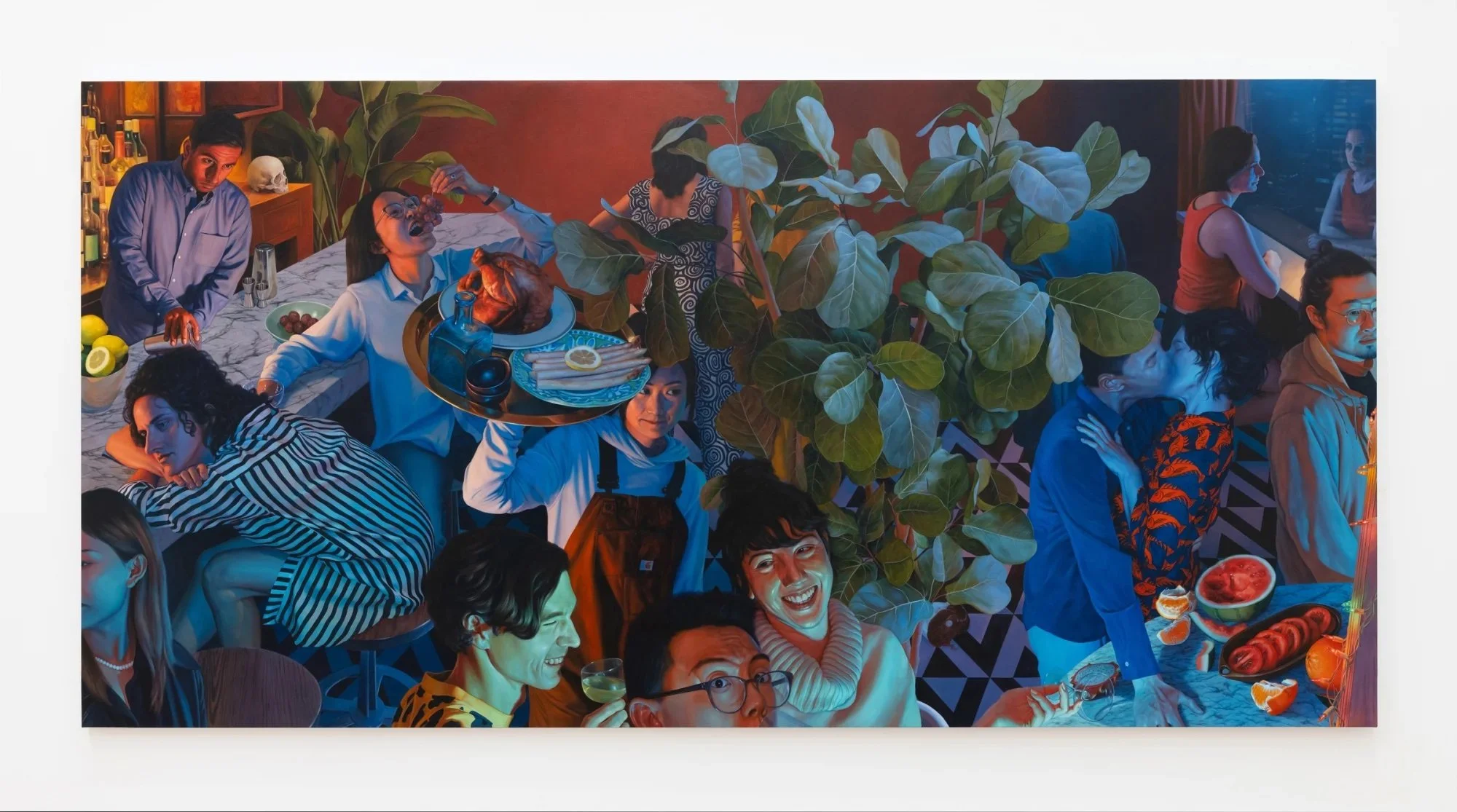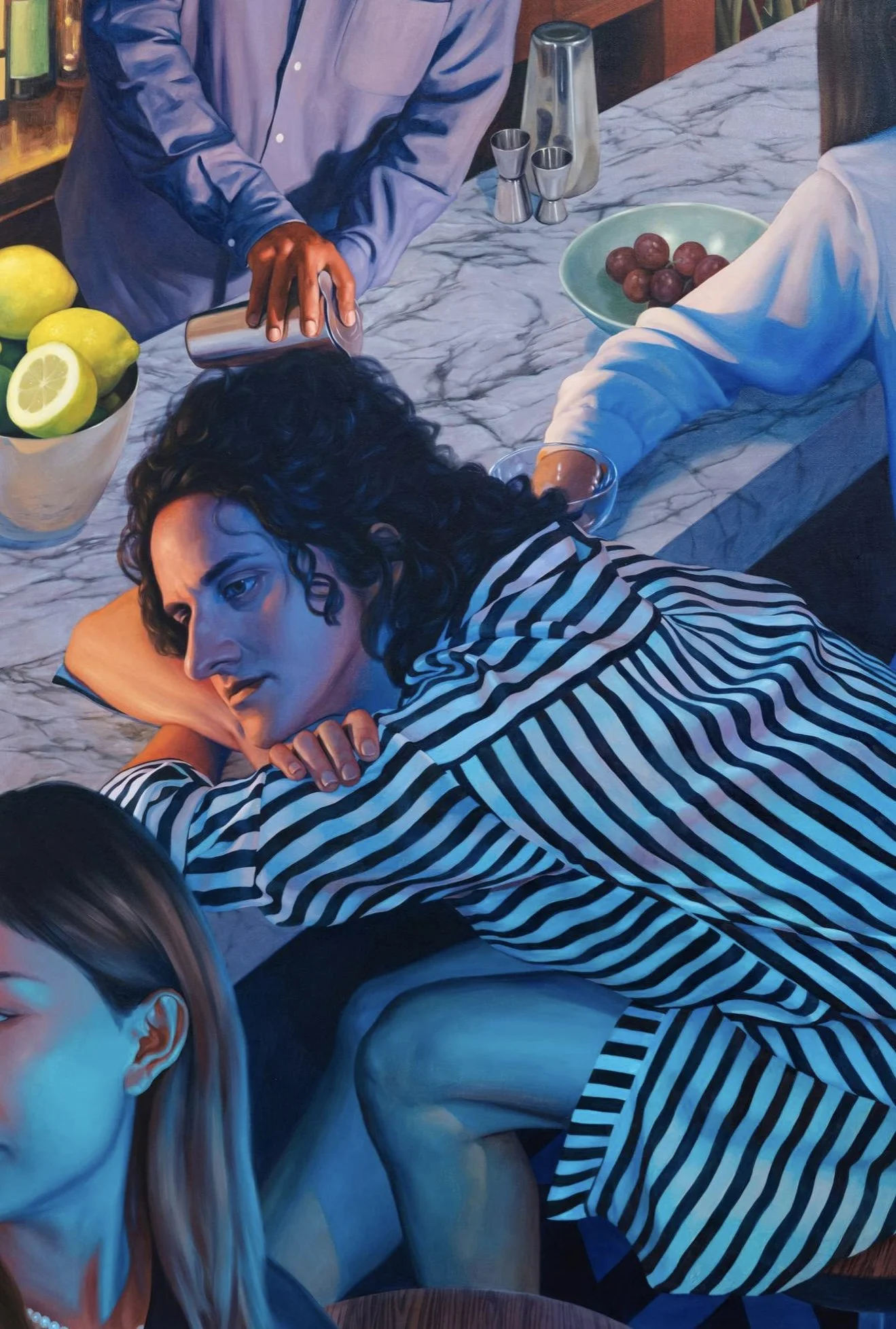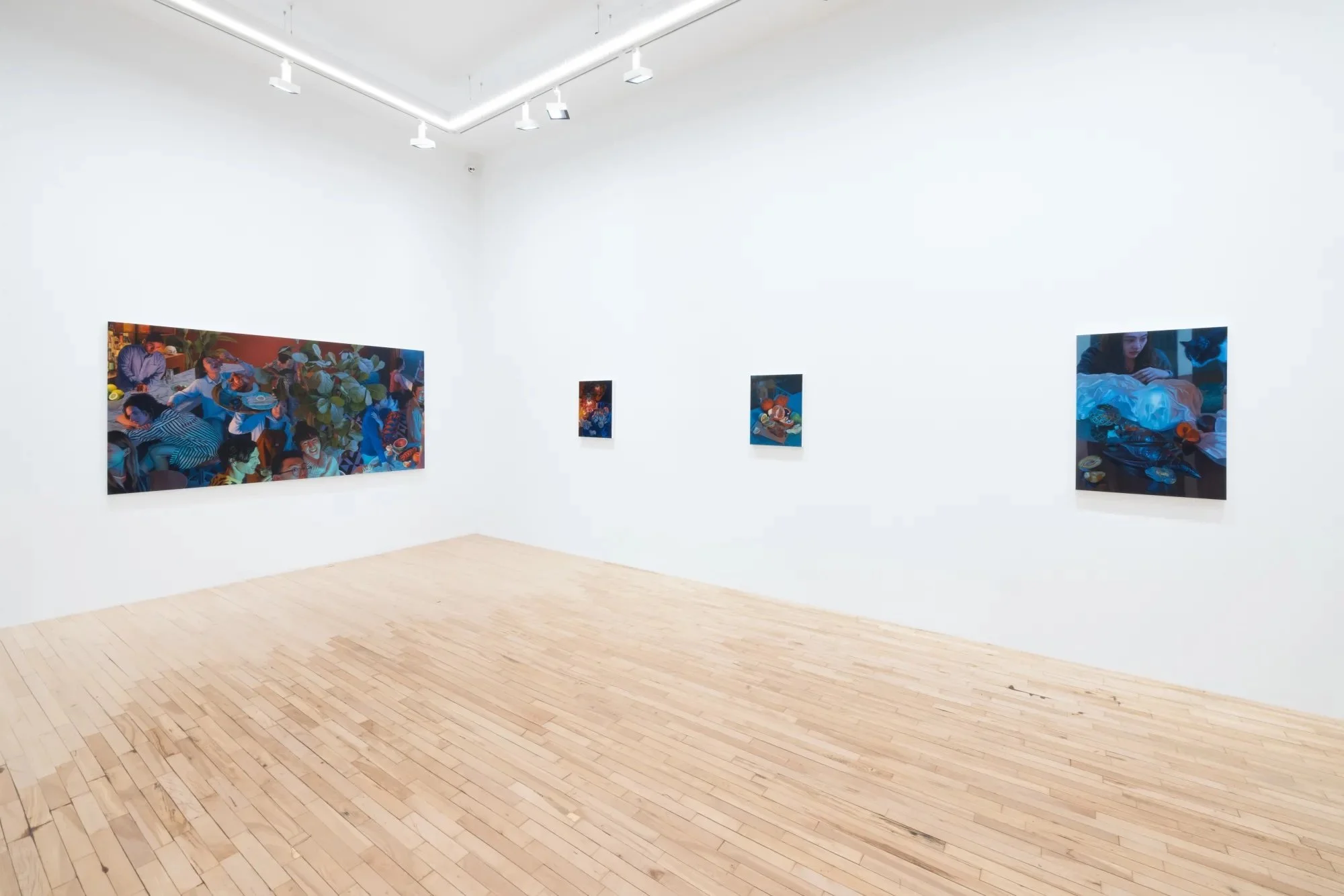Anatomy of a Painting: Xiao Wang's Seeing Through
In Xiao Wang’s Seeing Through (2025), the artist weaves a vibrant narrative filled with echoes of cinematic lighting, still life traditions, and deeply symbolic elements.
The scene, rich with color and detail, initially presents itself as a typical social gathering: there’s an intimate moment between a couple, lively conversation at a table, and sumptuous food scattered across the space. Yet beneath this seemingly familiar setting lies an intricate composition that blurs boundaries between the real and the imaginary, between life and death, and between what is seen and what is unseen.
One of the first things that strike the viewer is the intense, almost ethereal use of blue tones that dominate the painting. These hues suggest an atmosphere akin to those found in the films of David Lynch, where blue is a key color associated with the surreal, the uncanny, and the in-between spaces of existence. In Lynch’s works, blue often represents something “otherworldly,” a liminal space where the rules of reality no longer apply. Wang’s choice of blue here is similarly evocative, perhaps signaling a state where the boundaries of waking and sleeping, or of the real and the imaginary, fade into one another. It invites the viewer into a space where perception itself becomes fluid and unstable.
The scene is alive with motion, yet the composition is firmly rooted in the tradition of still life. Central to the painting’s visual language is the careful arrangement of objects on the table—a direct nod to the history of Dutch still life painting. The fleshy fruits, cut open to reveal their tender interiors, are hard to ignore. They carry the weight of a symbol—perhaps representing the body, time passing, or the fragility of life. The meats and severed fish, too, become memento mori of sorts, their rawness mirroring the human condition: impermanent, vulnerable, and yet vital. Art historian Natalie Michelle McCann has pointed out the inclusion of white asparagus, a subtle reference to Edouard Manet’s Une botte d'asperge (1880), further grounding Wang’s work in the rich tradition of still-life painting. Just as Manet used the asparagus as a symbol of bourgeois comfort and consumption, Wang repurposes it, invoking themes of decay, mortality, and the passage of time.
Amidst the still life, we find a moment of passion: a couple locked in a kiss. The embrace is both intimate and abstract, with their faces merging into one another in a blur that captures not just the act of kissing, but the emotional and psychological dissolution that often accompanies such moments. Here, Wang subtly references Edvard Munch’s The Kiss (1897), where the merging of the lovers’ faces symbolizes the merging of their identities. The blurred boundary between them in Wang’s work brings to mind Munch’s own exploration of the fragility and intensity of human connection. This moment stands as a poignant reminder of how love and intimacy can exist within a blur, both real and imagined.
Wang’s attention to detail extends to even the smallest patterns in the work, such as the blouse worn by the woman in the kissing couple. It’s a pattern borrowed from the works of M.C. Escher: two interwoven threads, each bearing a series of fish swimming head to tail, creating a mirror image. This nod to Escher’s famous tessellations adds an additional layer of meaning—just as Escher’s images play with symmetry and reflection, the couple's kiss, too, can be seen as a reflection of the connection between two people. The pattern suggests that relationships are at once distinct yet mirror one another, a symbol of how connection can both separate and unite.
However, perhaps the most remarkable aspect of Wang's Seeing Through is its final revelation: in the lower right-hand corner, a wooden frame belonging to a mirror is visible, subtly reminding the viewer that everything in the painting is, in fact, a reflection. The entire scene we see is not just a painting; it is the mirrored reality of a moment, contained within another frame. This clever device not only invites us to reconsider our understanding of the scene but also raises profound questions about representation itself. What we see is only a reflection of the real event, an illusion trapped in the confines of the mirror. And just like the observer looking into the painting, the figures within the scene are simultaneously being observed.
In Seeing Through, Xiao Wang masterfully intertwines the elements of still life, portraiture, and surrealism to create a painting that is much more than a moment captured in time. It is an exploration of perception, a meditation on the passage of time, and an invitation into a space where reality and illusion collapse. The blue tones, the symbolism of the objects, the abstraction of intimacy, and the final reveal of the mirror all serve to push the boundaries of what a painting can represent. As viewers, we are not just observing the scene—we are part of it, drawn into its liminal space, caught between what is visible and what is hidden.
Xiao Wang: Seeing Through is on view through March 15, 2025 at HESSE FLATOW, New York.


